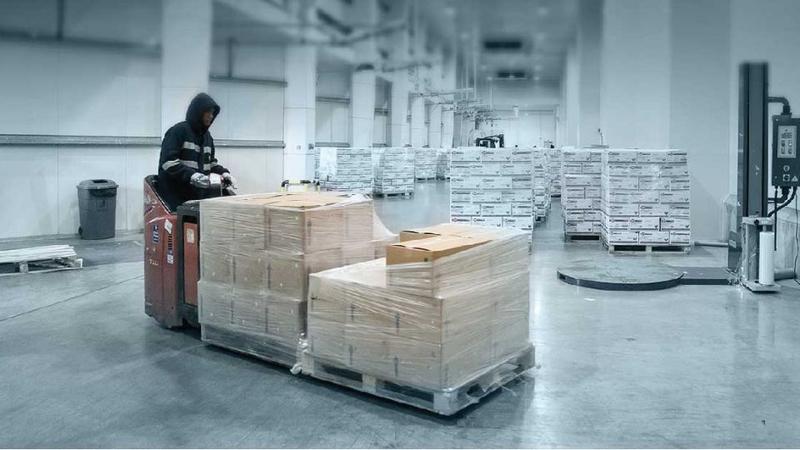Cold Chain Logistics Accelerates Transformation with Technology and Sustainability Initiatives

Cold chain logistics—the temperature-controlled supply chain for perishable goods like food and pharmaceuticals—is emerging as a critical pillar in global commerce and healthcare. With rising consumer demand for fresh products, increased pharmaceutical shipments, and globalized trade, cold chain logistics is undergoing rapid innovation. Leading companies are deploying cutting-edge technologies and sustainable practices to enhance efficiency, visibility, and environmental impact mitigation across the supply chain.
According to Straits Research, the global cold chain logistics industry was valued at USD 373.83 billion in 2024 and is expected to grow from USD 431.78 billion in 2025 to USD 1,367.47 billion by 2033, registering a compound annual growth rate (CAGR) of 15.50% during the forecast period (2025–2033). This remarkable growth reflects the surging demand for perishable goods, pharmaceutical shipments, e-commerce expansion, and the need for technological upgrades in temperature-controlled transportation and storage.
Technological Advances Driving Efficiency
Artificial intelligence (AI) now plays a crucial role in route optimization. Real-time analytics adjust delivery routes based on traffic conditions, weather, and delivery time windows, reducing delays, fuel consumption, and costs. Leading logistics companies increasingly implement AI-driven fleet management to enhance last-mile delivery reliability for cold chain goods.
Blockchain adoption improves traceability in cold chain networks. Immutable records of product handling—from harvest or production through transport and storage—enable companies to meet stringent food safety regulations and pharmaceutical compliance requirements. Blockchain also boosts consumer confidence by ensuring transparency and authenticity of goods, especially in vaccine and specialty food supply chains.
IoT-enabled monitoring remains foundational for cold environments. Sensors embedded in packaging and transport units provide continuous data on temperature, humidity, and location. This end-to-end visibility minimizes spoilage risks and facilitates swift response to temperature excursions that may affect quality and safety.
Solar-powered refrigeration is a growing trend, especially in regions with unreliable electricity. Solar cold chain units deployed in countries such as Nigeria reduce dependence on fossil fuels, cut operational costs, and decrease food waste, contributing to local food security and sustainability.
Key Players and Regional Expansion
Major global companies shaping the cold chain logistics sector include Americold Logistics Inc. (USA), Lineage Logistics (USA), Nichirei Corporation (Japan), A.P. Moller – Maersk (Denmark), Burris Logistics (USA), Tippmann Group (USA), and Coldman Logistics Pvt. Ltd. (India). These firms lead through investments in infrastructure, fleet modernization, and technology upgrades.
The Asia-Pacific region commands significant growth momentum, driven by countries like India, China, and Japan. India’s rapid urbanization and growing dairy and pharmaceutical sectors fuel strong cold chain demand. Companies such as Coldman Logistics and Snowman Logistics expand capabilities to meet the rise in food and pharma shipments requiring controlled environments.
North America continues to innovate with smart warehouse automation and IoT-integrated fleet management supporting demand for fresh food and biologics. The US and Canada’s focus on precision medicine and vaccine distribution consolidates their position in advanced cold chain services.
Europe focuses heavily on sustainability and renewable energy integration in cold chain infrastructure. EU regulations encourage energy-efficient refrigerated warehouses and vehicles, with players integrating solar cooling and green fuels to reduce carbon footprints. Companies in the UK, Germany, and the Netherlands are implementing large-scale green cold storage facilities.
Recent Industry Developments
Maersk highlights growing partnerships with logistics providers to integrate cold chain operations better, offering end-to-end visibility and supply chain resilience. In 2025, Maersk forecasted rising demand in pharma cold chains, largely driven by vaccine distribution and biologics shipping needs.
In India, investments in cold chain infrastructure surged with government support schemes like the PM-FME (Prime Minister Formalisation of Micro Food Processing Enterprises) and the National Cold Chain Development Program, which aim to upgrade storage and logistics for fresh produce and dairy.
Automation adoption in warehousing is increasing, with robotic handling and automated storage and retrieval systems (AS/RS) lowering labor costs and enhancing throughput in cold storage facilities globally. For instance, companies like Ocado Solutions deliver state-of-the-art automation tailored for temperature-controlled environments.
Future Outlook
The cold chain logistics industry faces opportunities and challenges amid rapid expansion. The rising global demand for fresh and pharmaceutical products will continue to require advanced temperature-controlled supply networks. Sustainability priorities will drive investment in green energy, solar refrigeration, and efficient packaging materials that reduce environmental impact.
- Art
- Causes
- Crafts
- Dance
- Drinks
- Film
- Fitness
- Food
- Games
- Gardening
- Health
- Home
- Literature
- Music
- Networking
- Other
- Party
- Religion
- Shopping
- Sports
- Theater
- Wellness


